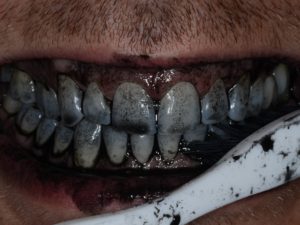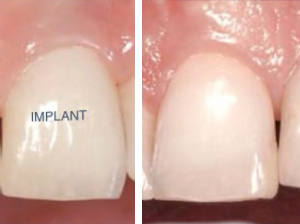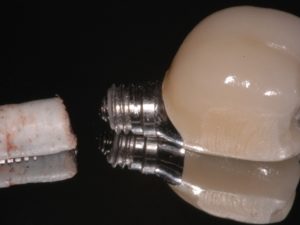
A dental implant is a great way to replace a missing tooth. Implants are permanent restorations, meaning they don’t have to be removed like a denture or partial. You also don’t have to drill on the adjacent teeth like you would with a bridge. However, they aren’t an exact tooth replacement because they integrate and lock into bone. Teeth are connected to bone via ligaments, which allows them to be moved with braces or drift with time. This difference may seem inconsequential, but it can lead to problems. In fact, many people develop a gap next to their implant that packs food between the teeth. This gap is called an open contact.
A recent meta-analysis showed that within five years over half of dental implant crowns are no longer touching the tooth next to them. Why is this a problem? Because the food that is packed between the teeth often causes deep decay and bone loss on the neighboring tooth.
So we’ve established that open contacts next to implant crowns is a common problem, but what’s the solution? If your implant crown hasn’t been placed yet, there are two things to consider. After the crown is placed on the implant, a retainer or night guard can prevent the natural teeth from drifting and causing an open contact. Also, the crown should be removable. That way if the contact opens up, the crown can be modified and put back in place with a closed contact.
If you already have an open contact around a dental implant, you have a few options. If food impaction isn’t a problem, nothing needs to be done. If the food impaction has caused a cavity on the adjacent tooth, a restoration can be placed on that tooth that will close the contact. Conversely, if food is being impacted but the adjacent tooth has no decay, the implant crown may be able to be removed and modified to close the contact.
Dr. Melander is a North Scottsdale dentist with extensive implant training and experience. If you are interested in placing an implant or having a current implant evaluated, call Enamor Dentistry for your implant consultation.





